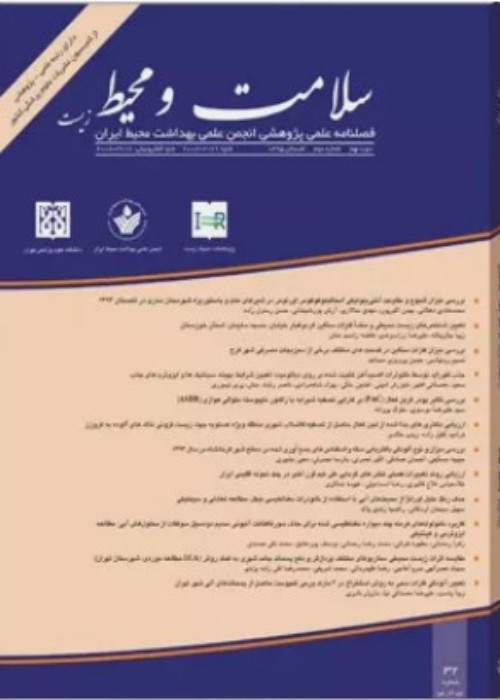Environmental Risk Assessment of the Olefin plant in Arya Sasol Petrochemical Complex using Fault Tree Analysis Method
Author(s):
Abstract:
Background And Objectives
Chemical spillage of equipment is possible in petrochemical processes. Occurrence of such event can result in firing and explosion and consequently would bring about some risks to the environment affected. The aim of this study was to assess environmental risks in Olefin Plant, Arya Sasol Petrochemical Company in order to identify environmental risks at producing source.Methods
The basic data was gathered through using the results of monitoring and measurement of ambient air pollutants and stack exhaust gases, safety review method and field observation. For determination the effects of hydrocarbons leakage from equipment on the environment, measuring BTEX in ambient air was performed as per EPA0030 Standard method with using Gas Chromatography at 4 stations of the complex and a portable Testo 350 XL device was used for monitoring stack exhaust gases, from 9 stacks from May 2011 to April 2012. Assessment and risk management tool used in this study was the fault tree analysis method. The main part of the risk assessment in fault tree method is selecting a top event. According to the statistics of accidents and environmental aspects of ethane cracking operations, hydrocarbon leakage is detected as top event and then composition and relationship between risk factors is determined in the form of terminal event, intermediate event and the gate “and” and “or”. With qualitative and quantitative analysis of fault tree of this accident, the main causes of the accident and the likelihood of the top event was calculated for a year. Results
Comparing with other stations, it was found that benzene with concentration of 0.37 mg/m3 in autumn, toluene with concentration of 0.13 mg/m3 in spring, and ethyl benzene with concentration of 0.09 mg/m3 in autumn, and xylene with the concentration of 1.01 mg/m3 in autumn season had the highest concentration. The fault tree developed had 16 events (including final, intermediate, and initial), which were connected to each other with seven logic gates. The maximum error percentage in the terminal events was attributed to the hardware failures such as malfunction in equipment with 55.55 percent followed by human and administrative errors in the next ranking. The highest percentage (22.2%) of the terminal events was related to the gasket unsuitable material; the main reason is due to the economic sanctions and the lack of effort to provide high quality products. Conclusion
Most likely occurrence of the final event was related to the gasket unsuitable material (2×10-2). Control action to prevent the occurrence of leakage could be supplying high quality gaskets and the failure is classified in the hardware failure category.Keywords:
Language:
Persian
Published:
Iranian Journal of Health and Environment, Volume:7 Issue: 3, 2014
Pages:
385 to 398
magiran.com/p1424116
دانلود و مطالعه متن این مقاله با یکی از روشهای زیر امکان پذیر است:
اشتراک شخصی
با عضویت و پرداخت آنلاین حق اشتراک یکساله به مبلغ 1,390,000ريال میتوانید 70 عنوان مطلب دانلود کنید!
اشتراک سازمانی
به کتابخانه دانشگاه یا محل کار خود پیشنهاد کنید تا اشتراک سازمانی این پایگاه را برای دسترسی نامحدود همه کاربران به متن مطالب تهیه نمایند!
توجه!
- حق عضویت دریافتی صرف حمایت از نشریات عضو و نگهداری، تکمیل و توسعه مگیران میشود.
- پرداخت حق اشتراک و دانلود مقالات اجازه بازنشر آن در سایر رسانههای چاپی و دیجیتال را به کاربر نمیدهد.
In order to view content subscription is required
Personal subscription
Subscribe magiran.com for 70 € euros via PayPal and download 70 articles during a year.
Organization subscription
Please contact us to subscribe your university or library for unlimited access!


